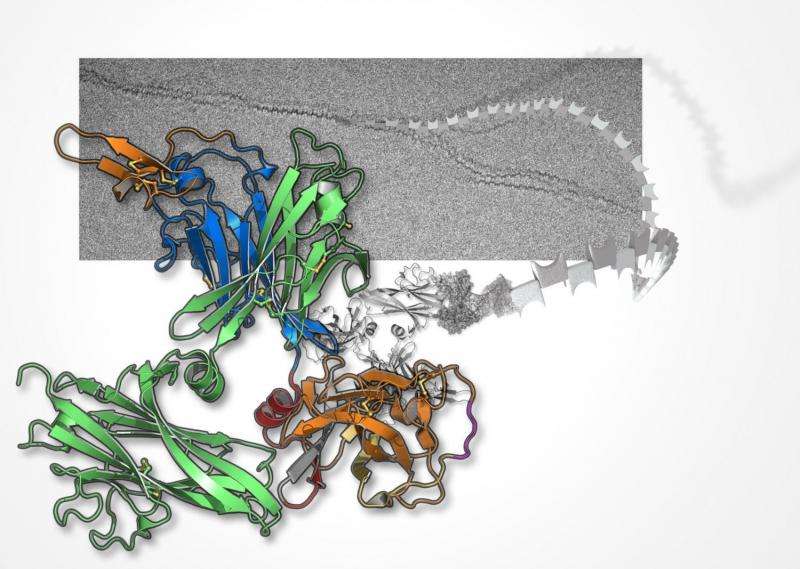3D images reveal the body's guardian against urinary infection

Researchers at Karolinska Institutet have obtained the first 3D structure of uromodulin, the building block of the unique safety net that constantly protects our urinary tract against bacterial infections. Uromodulin also plays a part in certain chronic diseases of the kidney. By analysing the structure of uromodulin, the researchers write in the journal PNAS that they can better understand the mutations that cause these kidney diseases.
Every year, some 150 million people develop an infection of the urinary tract, which makes it one of the world's most common non-infectious bacterial conditions. Women are most vulnerable, with one in every two developing a urinary infection at some time in life. It is not at all as common in men, but for those who do develop an infection, it can prove very serious.
Since our urinary tracts, unlike other passageways such as the nose, have no protective mucus to help keep bacteria away, the body has developed another strategy to protect itself from attack. Every day, our kidneys produce uromodulin, a sugar-rich protein, which on encountering salt ions in the urinary tract self-assembles into a water-soluble net.
This net contains a large quantity of a particular type of sugar that mimics those found on urinary tract walls. Therefore, the uromodulin net serves as bait for the bacteria that try to attack the body via the urinary tract, trapping and neutralising them before they are excreted from the body into the urine.
Now a team at Karolinska Institutet has managed for the first time to analyse the 3D structure of uromodulin in detail.
"We produced uromodulin using mammalian cells, both as a net that we could examine under a microscope and in a form that can be crystallised," says principal investigator Luca Jovine, professor of structural biology at the Department of Biosciences and Nutrition at Karolinska Institutet.
Protein crystallography
To obtain a 3D model of uromodulin, the researchers used a technique called protein crystallography, which produces atomic-resolution information on protein molecules by bombarding their crystals with X-rays.
"This enabled us to show for the first time what uromodulin, the most abundant protein in human urine, looks like in detail," says Professor Jovine.
The information thus produced is also important for understanding certain chronic kidney diseases.
"Now that we know the 3D structure of the protein, we are a step closer to understanding mutations that are responsible for uromodulin-associated kidney diseases," he adds.
More information: Marcel Bokhove et al. A structured interdomain linker directs self-polymerization of human uromodulin, Proceedings of the National Academy of Sciences (2016). DOI: 10.1073/pnas.1519803113
















